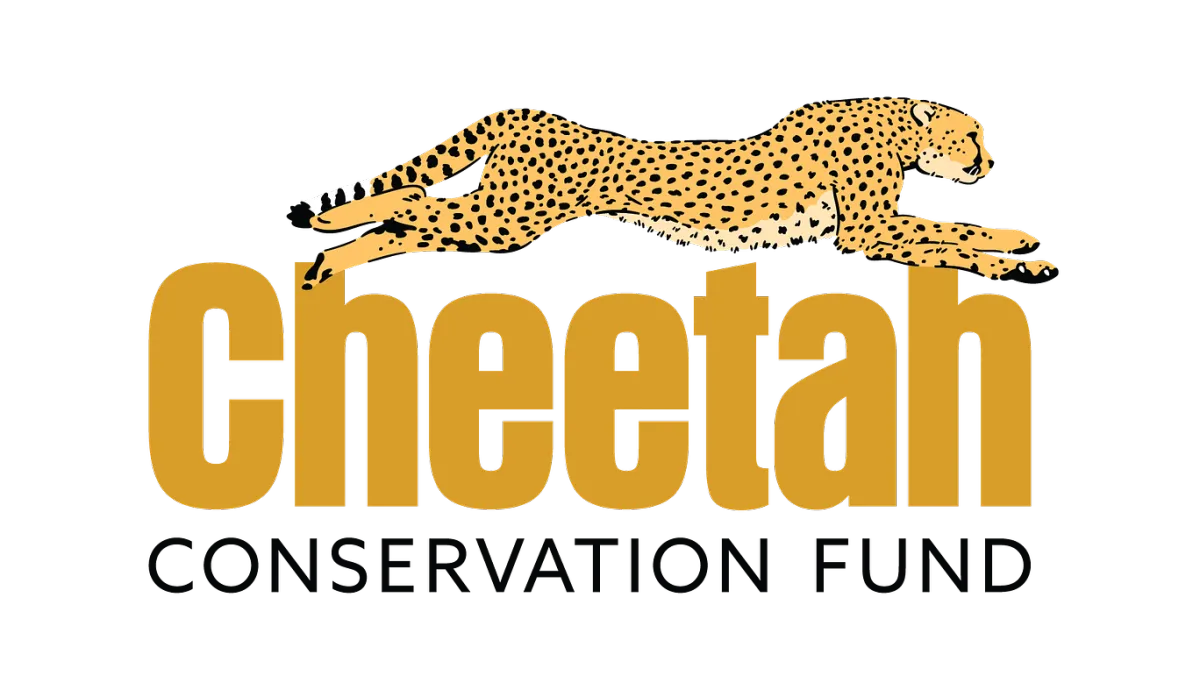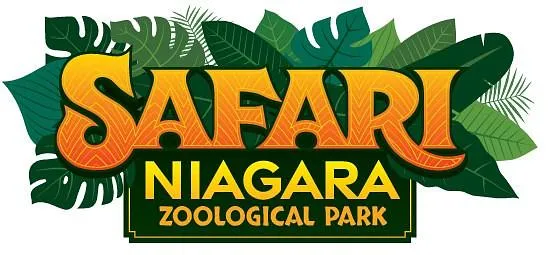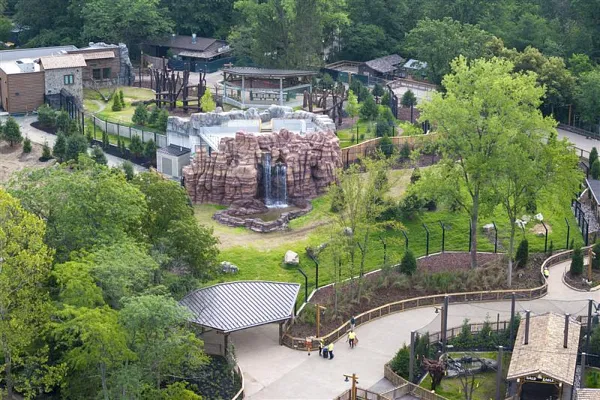ZAA Awards
2025 ZAA Award Winners
Award Categories:
Significant Propagation and Long Term Commitment to a Single Species
Ex Situ Conservation
In Situ Conservation
Excellence in Breeding
Excellence in Conservation Education
Comprehensive Immersion Exhibit
Animal Exhibit Award of Excellence
Significant Propagation and Long Term Commitment to a Single Species
The Long Term Commitment and Significant Propagation of a Species Award recognizes a truly momentous captive propagation achievement that enhances the conservation of the species whether common or endangered, in captivity.

Their African lion trio — Solomon, Bisa, and Ntsumi — arrived as cubs back in 2017 and 2018. Over the years, the team has welcomed multiple litters, navigating the challenges of first-time motherhood, providing expert care when needed, and celebrating the huge successes of their lioness Bisa — who has become a phenomenal mother. In fact, just this year, she amazed everyone with an impressive litter of five cubs!
Through ZAA’s network, the park has successfully placed cubs at accredited facilities across the country, strengthening genetic diversity and ensuring these lions continue to roar as ambassadors for their species. With African Lions listed as Vulnerable to Extinction, every single cub matters — and this team’s dedication is making a big difference.

Metro Richmond Zoo has been caring for Diana monkeys (Cercopithecus diana) for nearly three decades — that’s 28 years of commitment! In that time, they’ve celebrated 39 births — which is an amazing contribution for a species that is officially listed as Endangered. Each birth has helped refine best practices in nutrition, neonatal care, enrichment, and social management — knowledge that they’ve shared with other zoos across the country. Their work doesn’t just grow the captive population, it ensures that future generations of Diana monkeys thrive both in human care and, hopefully, in the wild. Metro Richmond Zoo also partners internationally with conservation programs in West Africa, supports ongoing research, and engages the public with press coverage, social media updates, and fun facts that turn each new birth into a powerful moment of education and empathy.
Ex Situ Conservation
The Ex Situ Conservation Award recognizes excellence in captive care, welfare and propagation of animal species in captivity, as a hedge against extinction.

Beginning in 2022, Twin Pine Farm & Exotics Conservation Foundation (TPFECF) launched the first structured ex situ conservation program for aardwolves in North America. Since then, they have imported aardwolves annually, totaling 15 individuals from Southern Africa to date, carefully managing the genetics, setting up a studbook, and leading the charge for species-specific husbandry.
In early 2025, the project reached a historic milestone with the first successful U.S. captive birth of aardwolves—twin males born at a ZAA-accredited facility in Florida to one of the founding imported pairs. This success occurred through their active partnership with ZooWorld Zoological and Botanical Conservatory and curator Kayte Hogan, whose leadership and dedication contributed significantly to this achievement.
The project also partners with leading scientists — from Dr. Brian Davis at Texas A&M on genetic sequencing to Dr. Mike Power at the Smithsonian on the first-ever study of aardwolf milk composition.
They are leading the ZAA Animal Management Program and are working with ZAA to create the first official aardwolf husbandry manual.

In the fall of 2022, fish biologists from Texas Parks & Wildlife Department (TPWD) approached aquarium staff at San Antonio Zoo (SAZ) to see if they would be interested in taking on a new pupfish project with a state species in need. The initial goal was to transfer a group of Conchos pupfish (Cyrinodon eximius) to SAZ and attempt to learn the husbandry required to maintain the fish species in captivity in an assurance colony. Due to the zoo staff’s experience and success with other species of pupfish, there was a confidence the goal was achievable. By December 2022, one hundred Conchos pupfish were transferred from the Devils River in west Texas to SAZ to begin the project.
By March 2023, they learned quickly that their husbandry was effective as they found hundreds of viable eggs being laid over the course of weeks leading to hundreds of fry. While the initial goal was met, secondary goals were already being accomplished with the first successful captive reproduction of the Conchos pupfish. Since then, SAZ has succeeded in reproducing the species in 2024 and 2025 as well.
In Situ Conservation
The ZAA In-Situ Conservation Award recognizes significant contributions to enhancing the conservation of an animal species in nature.

Small/Medium Facility
Kids Saving the Rainforest
Emerging Parasite Poses a Great Threat to Costa Rican Primates
KSTR's focus is the Central American squirrel monkey (Saimiri oerstedii), an endangered primate found only in a narrow strip of forest along Costa Rica’s Central Pacific coast. In 2023, KSTR discovered that more than a third of all rescued primates were infected with a parasite called Prosthenorchis elegans. It causes severe emaciation, internal damage, and often death. Their program combines wildlife triage and surgery, vector control through fumigation, diagnostic research, public education, and community outreach — all aimed at giving these monkeys a fighting chance. They’ve already treated dozens of squirrel monkeys, successfully saving eight that otherwise would not have survived.
KSTR is breaking ground on a new research center, expanding facilities, and working with partners like the University of Calgary to study the parasite and develop non-surgical treatments. Plus, their education programs are reaching schools, towns, tourists, and even 100,000 people online — making sure everyone knows that waste management and human activity directly impact wildlife health.
This is the only program in Costa Rica tackling parasite-related threats to squirrel monkeys head-on. It’s innovative, collaborative, and deeply committed to long-term survival of these charismatic little primates.

Large/Macro Facility
Cheetah Conservation Fund
Human-Wildlife Conflict Resolution Program using Livestock Guarding Dogs
The Livestock Guarding Dog (LGD) Program consists of breeding and training Kangal Dogs/Anatolian Shepherds, vaccinating and sterilizing them and putting them through snake aversion training. Then, they are placed with farmers to guard herds and protect against predators, mitigating human-wildlife conflict. The LGD Program has been 80-100% successful thus far in mitigating human-wildlife conflict in Namibia and surrounding African countries.
Excellence in Breeding
The Excellence in Breeding Award recognizes a truly momentous captive propagation achievement that enhances the conservation of the species whether common or endangered, in captivity.

Animal World & Snake Farm Zoo
Ángel de la Guarda Island Speckled Rattlesnake, Crotalus angelensis
This rattlesnake — Crotalus angelensis — has one of the most exclusive addresses in the animal kingdom: it lives only on Ángel de la Guarda Island in the Gulf of California. Animal World & Snake Farm Zoo has been dedicated to this species since 2016. Currently only two facilities, including AWSFZ, are known to house C. angelensis, making their work especially vital to the species’ long-term survival.Since acquiring their founding individuals in 2016, they have developed a targeted breeding program that has produced offspring on three separate occasions. Their most recent breeding success, a major milestone for the species in captivity, resulted in five healthy neonates. The team is sharing their methods with the broader zoo community, working toward a sustainable cooperative population, and setting the stage for more ZAA institutions to join in safeguarding this species’ future.
Excellence in Education
The ZAA Educational Award of Excellence recognizes outstanding achievement and innovation in education program design and implementation.

Small/Medium Facility
The Feline Conservation Foundation
Basic & Advanced Wild Feline Husbandry Course
This program has been running for over 40 years, making it one of the longest-standing specialized training courses for wild feline care in the country. It was designed to advance husbandry, behavior, and welfare practices for cats under human care — from the smallest Geoffroy’s cat to the largest tiger. In just the past decade, over 500 animal care professionals — including keepers, managers, veterinary staff, and educators — have participated. The curriculum covers everything from natural history and nutrition to enrichment, training, safety, and enclosure design, all with an emphasis on how managed care connects to broader conservation goals.

Safari Niagara first launched its Junior Zookeeper program in 2017, originally as a one-day shadowing opportunity. But by 2023, they realized the program could be so much more. Through a thoughtful, research-driven redesign, they transformed it into a full-day conservation education experience that now engages youth ages 11–17 in hands-on learning, skill-building, and green career exploration. The redesigned program also incorporated Action Research — a reflective, cyclical process that systematically improved every part of the experience, from staff training to curriculum outcomes. The result is a dynamic, evidence-based program that builds measurable competencies in observation, analysis, and animal care.
Comprehensive Immersion Exhibit Award
The ZAA Comprehensive Immersion Exhibit Award recognizes unique and innovative ideas centering on outstanding design immersion to create a holistic approach to the animal/human connection.

This stunning new exhibit, which opened in the fall of 2024, brings both the tropical rainforests of South America and the temperate rainforests of the Pacific Northwest under one roof. With more than six habitats, guests can encounter species ranging from two-toed sloths gliding along overhead canopy trails to Pacific banana slugs, salamanders, frogs, and vibrant macaws. Education is at the heart of this exhibit. Touchscreen panels, kid-friendly fact sheets, and interactive storytelling emphasize both global and local rainforest conservation. Visitors leave not just with awe, but with clear actions they can take to support rainforests worldwide.
Cougar Mountain Zoo also made this project a true community effort, collaborating with artists, designers, and even the State of Washington Legislature to bring the Rainforest Discovery Education Center to life.

This $36.8 million transformation, which opened in June 2025, reimagined the Zoo’s oldest region into an immersive 8-acre journey through iconic North American landscapes. With seven habitats, guests now encounter songbirds, swans, otters, wolves, eagles, bears, and more — all in spaces that reflect the unique terrain of their natural homes, from Ohio’s wetlands to the red rocks of the Southwest and the towering granite of Yosemite.
Importantly, nearly 70% of the animals in this region are rescues, many orphaned or displaced from the wild. Their stories are woven into the Trek, inspiring guests to think about the challenges of coexisting with wildlife and what they can do to help.
From sustainable building practices to green roofs and advanced water systems that recycle instead of waste, North America Trek is more than just immersive — it’s a model for modern, responsible zoo design.
Animal Exhibit Award of Excellence
The ZAA Animal Exhibit Award of Excellence recognizes excellence in the area of new and unique live animal display, exhibit design and construction.

Rajah’s Retreat, which opened in September 2024, is a stunning new home for the Zoo’s two tigers and an incredible learning environment for students in the Animal Care and Training program. Expanding the tigers’ space from just 800 square feet to a sprawling 8,000 square feet, this exhibit prioritizes both enrichment and welfare.
Perhaps most impressive, the Zoo measured cortisol levels before and after the tigers’ move — and the results showed no stress changes at all, proof of the careful planning, training, and positive human attention that made the transition seamless.
Since opening, Rajah’s Retreat has exceeded attendance goals month after month, drawing record-breaking crowds and glowing media coverage. It’s not just a new exhibit — it’s a community centerpiece, a student training ground, and most importantly, a modern, enriching home for two beloved tigers.

The OCWC, which opened in June 2025, is more than just an exhibit — it’s a conservation hub dedicated to Ohio’s native species. With the support of a $1 million grant from the Ohio Department of Natural Resources, partnerships with Battelle, and community fundraising, what began as a modest structure has been transformed into a vibrant space that blends science, education, and immersive design.
Inside, guests can see conservation happening in real time. Two large viewing windows showcase work with Eastern Hellbenders and Plains Garter Snakes, while digital counters update the public on milestones like hellbender releases back into the wild. Murals, interpretive graphics, and interactive displays tell the story of Ohio’s ecosystems, highlighting how each person can help protect them.
The Zoo has doubled the number of head-started Plains Garter Snakes and centralized its hellbender rearing program, setting the stage for hundreds of animals to be returned to their native habitats each year. Families and students leave not just with knowledge, but with a connection to local wildlife and a belief that they, too, can play a role in conservation.
Past Award Winners
2024
Educational Award of Excellence
Frank Buck Zoo - Teddy Bear Hospital
Comprehensive Immersion Exhibits Award
The Wild Animal Park - Ruins of the Wild: Mayan Jungle
Animal Exhibit Award of Excellence
African Safari Wildlife Park - Capybara Encounter Habitat
In Situ Conservation Award
Monterey Zoo - A Recipe for “Saving Rhinos”
2023
Educational Award of Excellence
The Zoo in Forest Park - Keeper Internship Program
Significant Propagation and Long Term Commitment to a Single Species
The Teaching Zoo at Moorpark College - Palos Verdes Blue Butterfly
Wolf Park, Inc. - Gray Wolf
Catoctin Wildlife Preserve - Sulawesi Island Macaques
Animal Exhibit Award of Excellence
Monterey Zoo - “Insert RHINO” Exhibit/Project
In Situ Conservation Award
Feline Conservation Foundation - Geoffroy's Cat
2022
Educational Award of Excellence
Wolf Park: Next Generation Wildlife Advocates
Significant Propagation and Long Term Commitment to a Single Species
Natural Bridge Wildlife Ranch: Giraffe
Zoosiana: Squirrel Monkey
Excellence in Breeding Award
San Antonio Zoo: Psychedelic Rock Gecko
Animal Exhibit Award of Excellence
The Wild Animal Park: "Ruins of the Wild: Monkey Temple"
Comprehensive Immersion Exhibits Award
Animal World & Snake Farm Zoo: Reptile Conservation Center
The Wild Animal Park: African Savanna Passage
In Situ Conservation Award
Tiger World: Timbavati Lions, Greater Kruger National Park
EX Situ Conservation Award
Columbus Zoo & Aquarium: Eastern Hellbender
2021
Educational Award of Excellence
The Zoo in Forest Park: Kids Go Wild Program
Significant Propagation and Long Term Commitment to a Single Species
Metro Richmond Zoo: African Black-Footed Penguin
Tanganyika Wildlife Park: Snow Leopard
Excellence in Breeding Award
Virginia Safari Park: Ruppells Griffon Vulture
Animal Exhibit Award of Excellence
Safari North Wildlife Park: Leopards of the Himalayas
Comprehensive Immersion Exhibits Award
ZooWorld: Wanyama Pori African Airstrip Adventure
In Situ Conservation Award
Fossil Rim Wildlife Center: Antelope Conservation in the Ouadi Achim Reserve, Chad, Africa
Lifetime achievement award
Mickey Ollson
2020
Educational Award of Excellence
Cougar Mountain Zoo: Zoo2U
Significant Propagation and Long Term Commitment to a Single Species
Fossil Rim Wildlife Center: Addax
Excellence in Breeding Award
Frank Buck Zoo: Three Banded Armadillo
Animal Exhibit Award of Excellence
Frank Buck Zoo: Prairie Dog
In Situ Conservation Award
Dakota Zoo: Black Footed Ferret
EX Situ Conservation Award
San Antonio Zoo: Mexican Freshwater Fish Program
2019
Educational Award of Excellence
San Antonio Zoo: Will Smith Zoo School
Significant Propagation and Long Term Commitment to a Single Species
Fossil Rim Wildlife Center: Cheetah
Excellence in Breeding Award
Downtown Aquarium Houston: Common Shovelnose Ray
Animal Exhibit Award of Excellence
ZooWorld Zoological and Botanical Conservancy: Allapattah Swamp and Alligator Feeding Experience
In Situ Conservation Award
Gulf Breeze Zoo: Spirit of Sumatra Program
2018
Educational Award of Excellence
Six Flags Great Adventure: Wild Encounters, Silver Safari, and Safari Off Road Adventure
Significant Propagation and Long Term Commitment to a Single Species
Tanganyika Wildlife Park: Clouded Leopard
Pittsburgh Zoo & PPG Aquarium: Amur Tiger
Comprehensive Immersion Exhibits Award
Pittsburgh Zoo & PPG Aquarium: Jungle Odyssey
In Situ Conservation Award
Myrtle Beach Safari: Soraya Station and the Sumatran Tiger
2017
Excellence in Breeding
Metro Richmond Zoo: Cheetah
In situ Conservation
Fort Worth Zoo: Anegada Iguana in the British Virgin Islands
Myrtle Beach Safari: Mountain Gorilla in Uganda
Educational Award of Excellence
Southwick's Zoo: White Rhino Encounter Program
Significant Propagation and Long-term Commitment to a Single Species
Fort Worth Zoo: Lesser Flamingo
Fossil Rim Wildlife Center: Attwater's Prairie-Chicken
San Antonio Zoo: Sunda Gharial
Tanganyika Wildlife Park: Reticulated Giraffe
2015
Lifetime Achievement Award
Joe Maynard
2014
Lifetime Achievement Award
Pat Quinn
2008
Lifetime Achievement Award
Ingrid Schmidt-Buchanan
2006
Award for Leadership and Achievement
Pat Quinn

